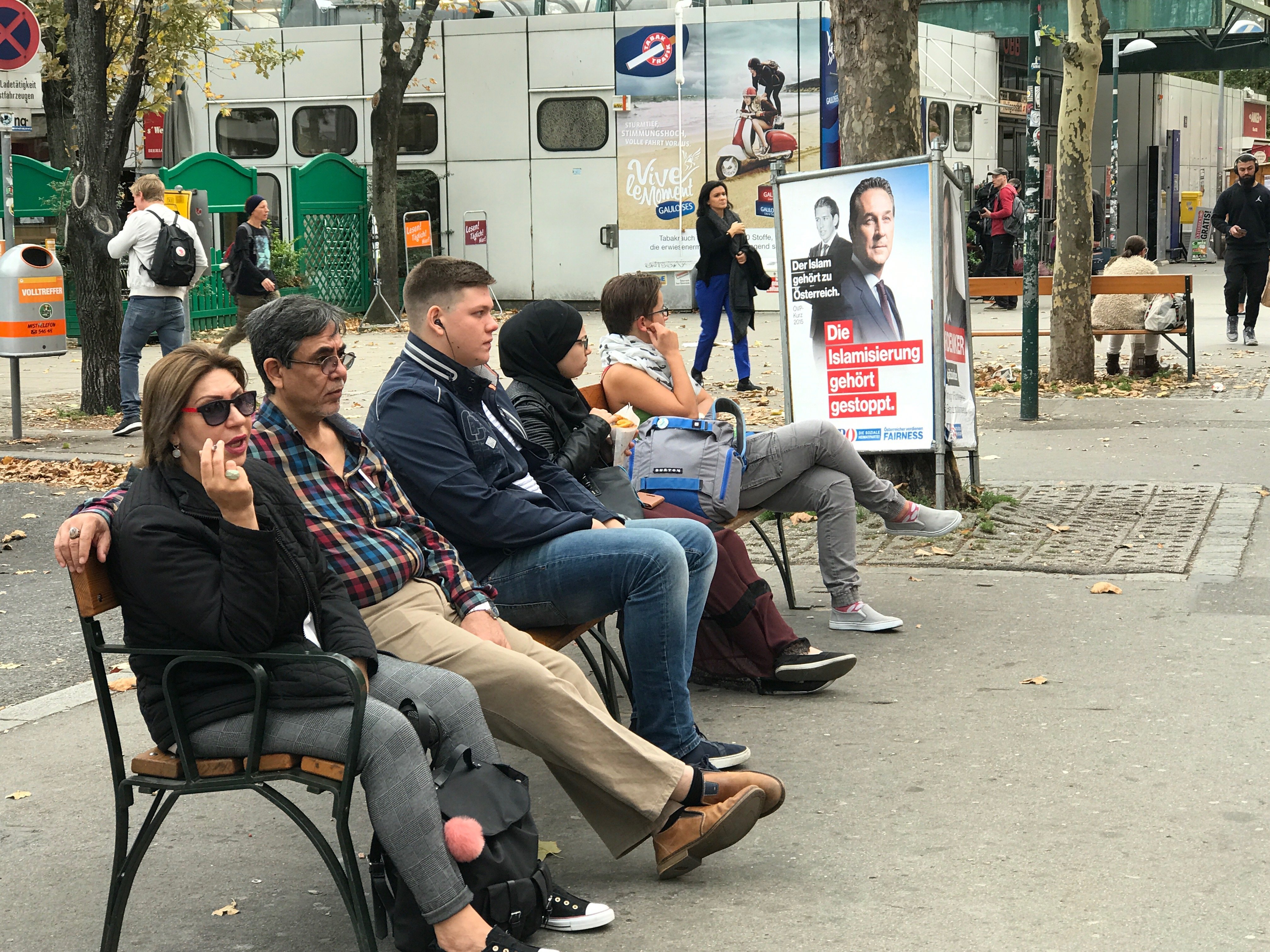
Let’s Drink to One Last Fascist‑Free Weekend

Let’s Drink to One Last Fascist‑Free Weekend

Sekt in Vienna
The new delicatessen on the corner seems to sell pasta, condiments, wine, and not much else. But they have a couple of metal tables set outside, and it’s an unseasonably warm day in Vienna, pushing 70 degrees Fahrenheit in mid-October. There are 72 hours left before Austria’s snap national election. It was called in the Spring, when the lumbering governing coalition of the center-left SPÖ and the center-right ÖVP—which has governed almost non-stop since the end of World War II—collapsed.
I settle at a table with a sekt—Austrian sparkling wine. Just across the street is a poster for the “new” ÖVP—currently leading the polls, rejuvenated by its new leader (and after Monday, perhaps Austria’s youngest-ever chancellor) Sebastian Kurz, the 31-year-old foreign minister. Kurz has been dubbed the “Wunderwuzzi”—a backhanded compliment that marries the terms “Wunderkind” and “toddler.”
These campaign posters, which are now all over the place, invite mild defacement. “Now. Or Never.” Kurz says on one. (Someone scrawled “Never” on Kurz’s forehead.)
The SPÖ’s campaign against Kurz was dirty, breaking a long-held taboo against negative campaigning here. Austria has not escaped our brave new world’s tide of political farce, and this scandal has it all: Facebook, George Soros-linked anti-Semitism, Islamophobia, shady political strategists, bribery. To recap: the SPÖ is accused of being responsible for a Facebook campaign smearing Sebastian Kurz—with pages claiming he was part of a “dubious” George Soros-funded political network and accusing him of having a secret plan to increase immigration from Islamic countries.
The news magazine Profil claimed that the sites were run by Tal Silberstein, an Israeli strategist whom the SPÖ chancellor, Christian Kern, had hired to mastermind his campaign. Silberstein, a negative campaign guru of sorts, was fired in August in connection with a money-laundering scandal in Israel, but Profil say his team continued to run the pages. In another twist, Peter Puller, who worked on the SPÖ campaign with Silberstein, claims the ÖVP once offered him 100,000 Euros to switch sides. The ÖVP denies this and is threatening to sue.
The new dirty campaign notwithstanding, the worst part of all this is that the SPÖ’s mess could well end up giving the far-right, proudly xenophobic Freedom Party (FPÖ) a larger piece of the electoral pie. The FPÖ and the SPÖ are jostling for second place with around 25 percent of the vote each. The most likely outcome of Monday’s poll is that that the FPÖ will enter a governing coalition with the ÖVP.
This is what happened 17 years ago. I remember the night when the “Blue-Black” coalition was announced: it was Feb. 19, 2000, five months after the election. A friend and I stumbled into the 150,000 people in Vienna protesting the FPÖ entering government. (We were teenagers. We had spent the evening getting my friend’s hair dyed purple and turquoise.)
Back then, the FPÖ’s rat-like but charismatic leader, Jörg Haider—who died in a car crash exactly nine years ago this week—had brought his party back from the political wilderness by campaigning on an anti-immigration ticket, despite Austria having the second-lowest immigration in the European Union. This time around, Austria has taken in one percent of its population in refugees—that’s more than Germany, proportionally—and Heinz-Christian Strache, the FPÖ’s leader (who was once arrested at a mock Hitler Youth march) has amped up the party’s xenophobic and nationalist flavor. A winning combination.
The SPÖ broke another long-held taboo this year—the 31-year, self-imposed ban on governing with the FPÖ—apparently because the party has cleaned up its act. In the months leading up to this week, it has not ruled out entering a coalition with the FPÖ.
The FPÖ has been increasing its vote share over the years, even in more liberal Vienna. This week, I saw people eagerly taking FPÖ pens and pamphlets from volunteers at my local U-bahn station. I scowled and shook my head to signal my disapproval of all this as I took cell phone snaps of a poster on which an airbrushed Strache stated “Islamization has to be stopped,” while on a bench mere feet away a young woman in a hijab scrolled through her phone.

Outside the confines of right-wing Burschenschaften—the secretive fraternities to which many of the FPÖ’s top brass are linked—and beyond explicit anti-foreigner soundbites, far-right politicians have a few other gambits: celebrating the 333rd anniversary of defeating the Ottomans after the siege of Vienna, to show the importance of “defending Western civilization”; reviving the pan-German nationalism—the notion that Austria belongs to German territory and culture—that the party had dropped under Haider’s leadership; liberal use of the word Heimat—the term for both a homeland and cultural identity that, to some, still carries an unsavory soil-and-blood charge. And, of course, wearing blue cornflowers, which were once associated with the Nazis.
The party says it has moved past its past. (It was founded by a former SS officer.) Apparently that’s enough for lots of people to vote for them. But only last week, the party had to suspend a member who allegedly did a “Heil Hitler” salute at a meeting in Styria province. They also recently had to expel a high-ranking party operative in Tyrol, who had displayed Nazi paraphernalia in the back of his pharmacy. Austria’s Mauthausen Komitee, a research group named for the Nazi concentration camp east of Linz, published an information booklet this year detailing 60 cases of Nazi-related incidents involving FPÖ members. As the booklet’s title notes, that’s a whole lot of isolated cases.
Still, there are 72 hours left before these people might have a seat at the table. It’s Friday, it’s sunny, and the FPÖ is not in charge, for one more weekend at least. Let’s drink some sparkling wine to that.